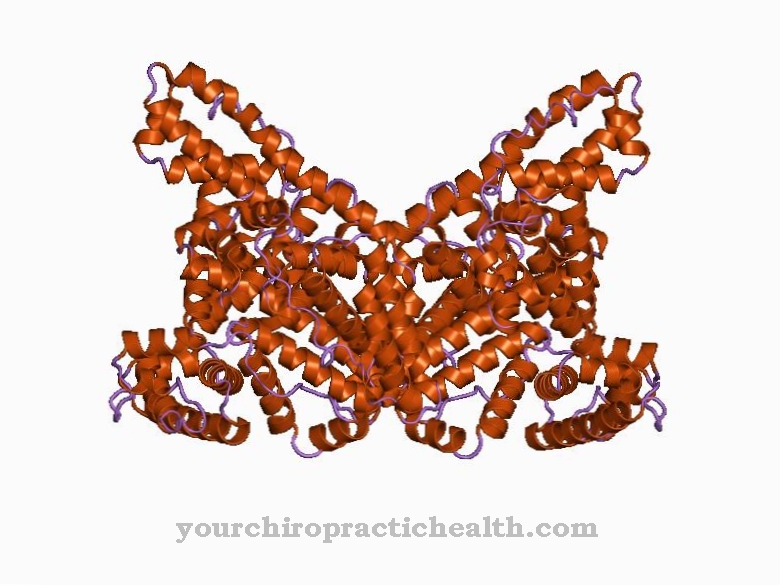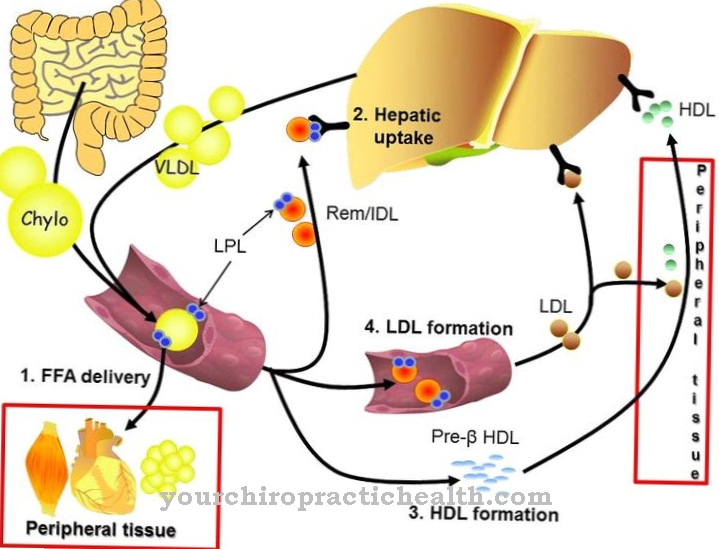One of the most common elements on earth is the oxygen. About a fifth by volume of this chemical element is present in the air, although it is colorless, tasteless and odorless. It is also found just as frequently in water and in the earth's crust. Most living things and living cells need oxygen for breathing.
What is oxygen
In the periodic table, oxygen is indicated with the symbol “O” and has the atomic number “8.” Most of the time, it occurs in compounds and as a two- and three-atomic molecule. The latter is also known as "ozone".
Rocks and minerals often contain oxygen, such as B. quartz, marble or limestone. Free and individual oxygen atoms, on the other hand, are only possible in stable form under extreme conditions. That is the case in the vacuum of space. Oxygen can be separated from the air by distillation and then, when liquefied, takes on a bluish color. Such conditions are used e.g. B. in the refinement of metals, the extraction of chemicals or as a medical application for life support.
Oxygen is always gaseous under normal conditions and, in combination with other elements, is involved in many combustion processes. It was discovered and researched in 1772 by the chemist and pharmacist Carl Wilhelm Scheéle.
This isolated oxygen as a gas, a process that was similar to the pasteurization process, and in this way discovered other elements as well, e.g. B. nitrogen. However, since he did not publish his work on it until a few years later, the chemist Josep Priestley came before him, who, independently of him, made the same discovery, including what effect oxygen had on combustion processes, although the actual process itself was still there was not deciphered.
Previously, fire was viewed more metaphysically, as one of the four elements that made up being. In addition to fire, there were earth, air and water. In the 17th century, heat was then combined with fire, and when it was discovered in the 18th century, the substance became an element. But it was only through the private scholar Antoine Laurent de Lavoisier that it was then possible to correctly interpret combustion and breathing. He carried out experiments with pure oxygen and determined the composition of the air.
Function, effect & tasks
In the atmosphere, oxygen is always found in gaseous form and dissolved in water. The element is very reactive and is mainly produced by plants through photosynthesis and consumed again through breathing and other combustion processes. Blue-green algae and cyanobacteria also play a part in these processes, which began more than three billion years ago to store sunlight and use it for the synthesis of organic compounds. Oxygen was and is therefore a very effective waste product.
Humans, plants and bacteria need oxygen in order to be able to live and to generate energy in this form. The processing takes place in the mitochondria, whereby the oxygen in the respiratory chain then becomes water again. In turn, enzymes break down substances in the organism through oxygenation.
Education, occurrence, properties & optimal values
The good reactivity of oxygen and its compounds can, however, also lead to more dangerous destruction of cell structures. Although humans need oxygen to breathe, too much oxygen is poisonous and, in large amounts, can even lead to lung damage over a long period of time.
The human organism functions with an oxygen concentration of around 21 percent in the air. Red blood cells carry oxygen from the lungs to the organs. If this is too high, the alveoli swell and the wall cells in the lungs become necrosed, the pneumocytes are damaged and protein masses are deposited on the inner wall. The result is a greatly reduced gas exchange in breathing and in the bloodstream.
Likewise, a gas mixture with increased oxygen can damage the central nervous system and cause central nervous symptoms. We speak of the Paul Bert effect, which can manifest itself in ear noises, dizziness, nausea, vomiting, but also in drastic conditions such as personality changes and mental confusion. This is a common side effect, especially in diving, so that the oxygen content and maximum diving depth must be observed.
Diseases & Disorders
Most organisms have protective enzymes such as peroxidase and catalase to detoxify the oxygen. The breakdown of oxygen in the body creates free radicals that damage the mitochondrial DNA and which can be counteracted by antioxidants. Such are ingested with the food and are z. B. Vitamins C, A and E, minerals and trace elements.
An imbalance between reducing and oxidizing substances in the cells leads to a disruption of the body's own detoxification function and damages the cell. This is known as oxidative stress, which in turn leads to aging processes.
A lack of oxygen is common in heart and lung diseases. This in turn has damaging effects on the arteries and tissues of all vital organs. Here, oxygen must also be administered and artificial respiration must be provided. Oxygen also serves the wound healing process itself. Wounds can become infected after surgery, in which the oxygen tension in the tissue and the immune cells in the blood play a role, which use free radicals to fight the bacteria in the body. In most cases, oxygen is also supplied after the anesthesia in order to reduce the risk of infection.
Diseases associated with chronic oxygen deficiency require long-term oxygen therapy. Causes can be a narrowing of the airways, pulmonary embolism, damage to the lung tissue or serious heart defects.


.jpg)





















.jpg)



